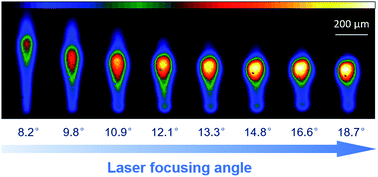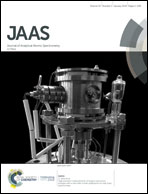Laser focusing geometry effects on laser-induced plasma and laser-induced breakdown spectroscopy in bulk water
Abstract
The influences of laser focusing geometry on laser-induced plasma and laser-induced breakdown spectroscopy (LIBS) in bulk water are investigated by using fast imaging and spectroscopic techniques. Comparisons between different focusing geometries (spherical aberrations and focusing angles) are performed in terms of breakdown thresholds, plasma morphologies, emission distributions, pulse-to-pulse plasma fluctuations, and the corresponding LIBS signals. It is shown that spherical aberrations lead to an increase in the threshold energy of breakdown, to a formation of multiple elongated plasmas with weak emissions, and to a decrease in the signal intensity as well as LIBS stability. With aberration minimized focusing, larger focusing angles produce a lower breakdown threshold, a compact plasma with stronger emissions, and a higher signal intensity as well as higher LIBS stability. In particular, we demonstrate that with the minimized spherical aberrations and large focusing angles, the intensities of plasma emission continue to increase at higher laser energies and no clear saturation is observed. The present results suggest that a relatively large focusing angle should be applied for LIBS measurement in bulk water, and the spherical aberrations should be eliminated.



 Please wait while we load your content...
Please wait while we load your content...